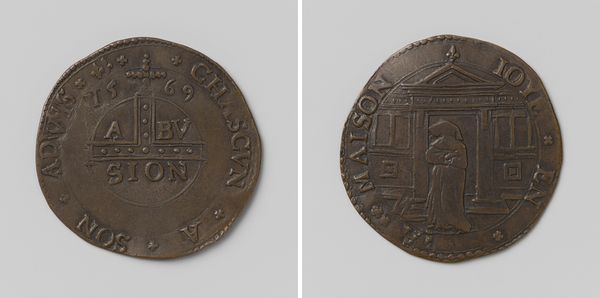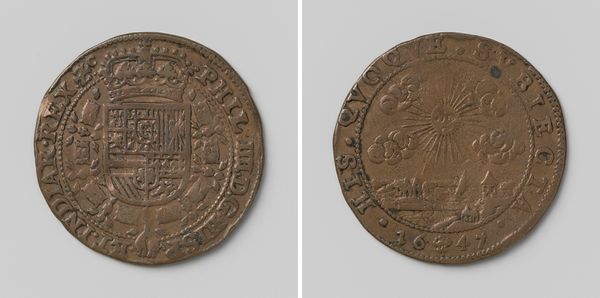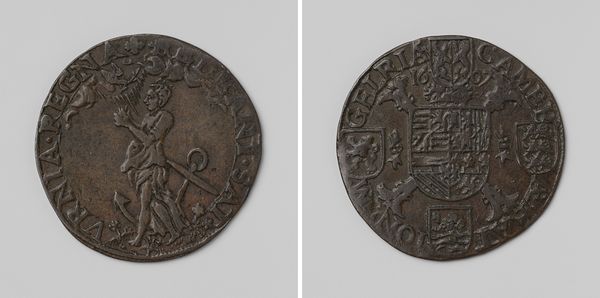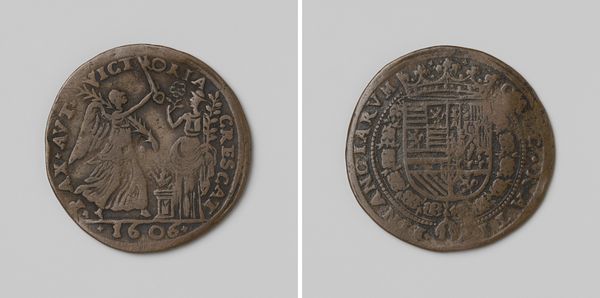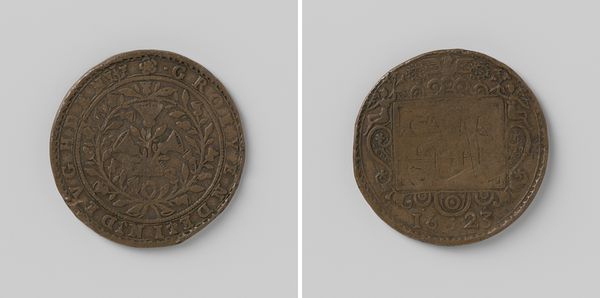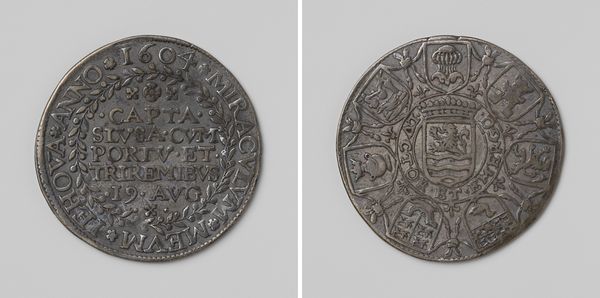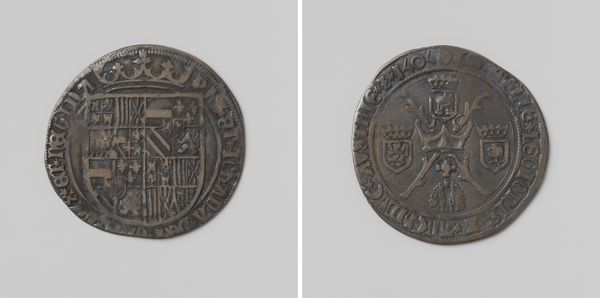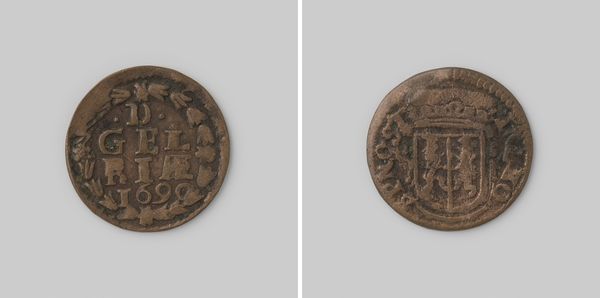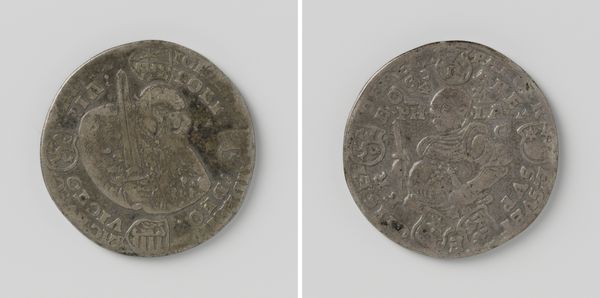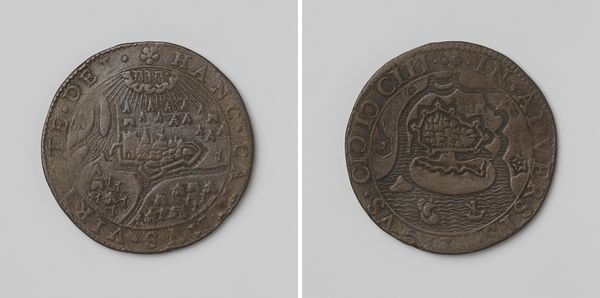
Hoop op vrede in de Spaanse Nederlanden, rekenpenning van de raad van Financiën 1605
0:00
0:00
#
natural stone pattern
#
3d sculpting
#
decorative element
#
3d printed part
#
detailed texture
#
sculptural image
#
unrealistic statue
#
3d shape
#
stoneware
#
ceramic
Dimensions: diameter 2.7 cm, weight 4.59 gr
Copyright: Rijks Museum: Open Domain
Curator: Ah, yes, "Hoop op vrede in de Spaanse Nederlanden, rekenpenning van de raad van Financiën," or "Hope for Peace in the Spanish Netherlands, Accounting Penny of the Council of Finance." It's from 1605. Notice the... well, almost industrial, uniformity and density in the symbols used to communicate concepts of peace. Editor: I'll say! It has an old-world, wishful-thinking feel to it. Kind of rusty and tarnished around the edges. But still strangely optimistic given the gravity of what it represents. Curator: It’s a tangible object representing the fiscal apparatus of the Council during wartime—it was designed not only to commemorate peace but also to project the strength and stability of the council during turbulent times, as demonstrated through the imagery, specifically, the iconography of the figures. Editor: I’m immediately drawn to the two figures on what I guess you'd call the 'front' side—one offering the other some flowery… keys, perhaps? The style is interesting, stiff but… confident. What's with the plant? Curator: The angel figure extending a laurel wreath embodies victory. Peace is not simply given but achieved. Note that the Council of Finance had very direct material concerns. How funding affected war capacity was part of their operational logic. Editor: So this wasn’t about abstract ideals. Who produced this, given that material background? Some bureaucrat pushing for their corner office view? Curator: Well, such objects typically were designed within the context of a well-defined, and regulated guild structure which played a very real role in dictating the precise visual conventions and techniques of artistic expression. The penny also circulated amongst traders and bankers, thus functioning beyond the closed quarters of the council. Editor: Thinking about the guilds, it makes the... craftsmanship feel more human. Not just currency, then; more like pocket propaganda. Like a well-designed meme from the 17th century. Curator: Indeed. And consider the relatively limited circulation—it would signify exclusive connections and financial prowess amongst elites involved in managing state revenue streams in that era. Editor: Well, now, looking at it in that light, the scale and craft involved becomes something deeply telling. It does make you think differently about the history we sometimes tend to detach from daily practices, doesn't it? Curator: Absolutely. Examining material production reframes conventional ideas about historical change and those processes of conflict and resolution.
Comments
No comments
Be the first to comment and join the conversation on the ultimate creative platform.

